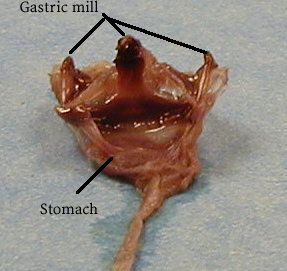
Diet and Digestion
Diet
Lobsters usually move around and hunt for food at night. It was once thought that lobsters were scavengers, and ate primarily dead things. However, lobsters are really more opportunists, catching mainly fresh food which includes fish, crabs, clams, mussels, sea urchins. Lobsters are also cannibalistic and sometimes will eat other lobsters.
Baited traps also supply food for lobsters. Traps are baited primarily with salted fish — usually herring. Juvenile lobsters can move freely in and out of lobster traps, and adults can also move in and out of the traps. Thus, many feel bait provides a substantial source of food for inshore lobsters.
Eating & Digestion
Lobsters “smell” their food by using the four small antennules on the front of their heads and tiny sensing hairs that cover their bodies.
A lobster will use its crusher claw to break open shellfish and its ripper claw to tear food apart. The two sets of walking legs (or pereiopods) immediately behind the claws are also used for catching and eating food and have many “taste” sensors. They are used to move food into the mouthparts or maxillipeds. The teeth of the lobster are in its stomach. The stomach is located a very short distance from the mouth, and the food is actually chewed in the stomach between three grinding surfaces, called the gastric mill, that look like molar surfaces.

